DECEMBER 20, 2017
 Sunday, December 17, 2017 at 03:30PM
Sunday, December 17, 2017 at 03:30PM HAPPY HOLIDAYS!
Enjoy our year-end issue, and we'll see you back here
on January 10, 2018!
(And scroll to the bottom of the page for news updates during the break!)
BEST OF “ON THE TABLE” 2017
So WTF, they couldn't see fit to add another "d" to the name for clarity? The new Johnson Controls spinoff - Adient Ltd. - moved its operational headquarters from Milwaukee to metro Detroit. That's all well and good, and the world's largest automotive seating supplier may have it goin' on, but the spinoff's name is simply idiotic. It reads as Aidient but it's pronounced as Addient. It’s no secret that auto industry executives can get sidetracked. They do dumb things; they commit to boneheaded product initiatives and then try to market their way out of their mistakes. Some of them don't mean to be that incompetent, while others just simply wake up in that blissful state. The stumble bum executives at Johnson Controls woke up from their blissful slumber and then promptly got lost in the melodious tones of their own thought balloons, apparently. I could ad more, but why bother? –PMD (1/4)
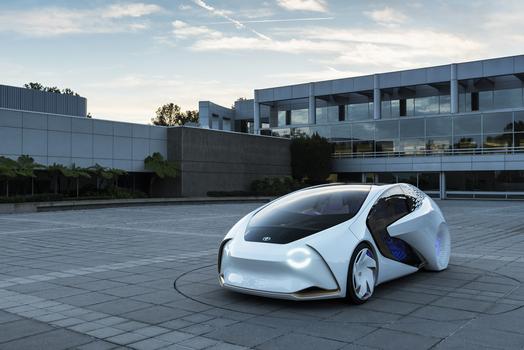
(Toyota)
Imagine the sound of one hand clapping; and the other one covering your mouth during a giant yawn. P.S. Nobody gives a shit. "Imagine if the vehicles of the future were friendly, and focused on you." That’s what Toyota is saying about its Concept-i, announced at the 2017 Consumer Electronics Show in Las Vegas. Designed by Toyota’s CALTY Design Research in Newport Beach, Calif., along with user experience technology development from the Toyota Innovation Hub in San Francisco, the Concept-i was created around the philosophy of “kinetic warmth,” a belief that mobility technology should be warm, welcoming, and above all, fun. (1/4)
We’re sure you can get allowances to have your handmade Italian sweaters made with a lovely striped pattern, however. The U.S. Environmental Protection Agency accused FCA of using cheater software that allowed its diesel vehicles to pass emissions tests, in a story first reported by Reuters. Just over 100,000 U.S. trucks and SUVs sold since 2014 are said to be equipped with the rogue software. The EPA has officially notified the automaker that it believes its use of the undeclared emissions control software has allowed its vehicles to generate excess pollution, which is in clear violation of the law. The EPA refused to certify Fiat Chrysler's 2017 diesel vehicles for sale in the U.S. for months. And now we know why. Then, Sergio being Sergio, he went off on the accusations saying it was nothing like the VW situation and that it was a giant misunderstanding, or it was a set-up of some kind, or some such nonsense. But, better be careful, Sergio, when people and corporate entities find you ferociously unpalatable, utterly loathsome and flat-out untrustworthy, you describing the whole thing as "hogwash" doesn't exactly resonate. (1/11)
Editor's Note: As if the paltry automotive offerings weren't enough of a downer, the food and beverage presentations at the Detroit show were their own category of pathetic. Once upon a time, the manufacturers - the Germans in particular - could be counted on to present lavish spreads throughout the day (complete with printed menus, fine china, crystal and cloth napkins). It may sound superficial, but it definitely added a bit of civility and refinement to the proceedings, and helped make the slog of the show slightly more tolerable. Well, those days are gone, baby, gone. The fruit "thimbles" at Mercedes and Lilliputian muffins at Audi were really quite sad. I couldn't help but feel that the downsizing of the refreshments corresponded to the decidedly downsized spirit of the show. And I left hungry for more - of everything. –WG (1/11)
The Hydrogen Future. In the first global initiative of its kind, the "Hydrogen Council," meeting in Davos, is determined to position hydrogen among the key solutions of the energy transition. The 'Hydrogen Council' is currently made up of 13 CEOs and Chairpersons from various industries and energy companies committed to help achieve the ambitious goal of reaching the 2 degrees Celsius target as agreed in the 2015 Paris Agreement. The international companies currently involved are: Air Liquide, Alstom, Anglo American, BMW GROUP, Daimler, ENGIE, Honda, Hyundai, Kawasaki, Royal Dutch Shell, The Linde Group, Total and Toyota. The Council will work with, and provide recommendations to, a number of key stakeholders such as policy makers, business and hydrogen players, international agencies and civil society to achieve these goals. Editor's Note: Peter's idea for The Future of Racing, in a presentation he made to industry and racing leaders a decade ago, is proving to be more visionary by the day. Read about the Hydrogen Electric Racing Federation here. –WG (1/18)
Editor-in-Chief's Note: Tom Bartkiewicz is an old friend of AE and occasional contributor. He's also a committed car enthusiast and historian with a deep understanding of economics as it pertains to the car business and beyond. We think you will find his latest piece on the autonomous car movement enlightening, informative, filled with tremendous perspective and with more than a little foreboding added in for good measure. It is superb. -PMD
The End of Progress.
By Tom Bartkiewicz
Baton Rouge. One of my better friends while growing up was Chip. Chip’s grandfather was general manager and part owner of the Chrysler/Dodge store in Baton Rouge. Chip’s mom, Suzanne knew I liked cars and one day in the fall of 1964 she collected Chip and me in their Dodge and said we were going down to Standard Motorcar Company to see a very special car. When we arrived a small crowd was there and upon making our way through, there in all its bronze magnificence was the car of the future, a Chrysler Ghia Turbine car.
The late fifties and early sixties are often referred to as the “Jet Age” and here was a car with a jet engine. The Chrysler representative asked Suzanne if she would like to drive the car with us along for a ride. We climbed in the back, she got in the driver's seat and the rep sat in the passenger seat. After some instruction, she turned the key and to this day I can still remember the sound of that turbine spool up, the ignitor going off and the jet engine whine. She put the car in drive and off we went. We drove around downtown mesmerized by the rising and falling pitch of the gas turbine. Upon return we were given literature about the car along with a plastic promotional model. I still have all of the literature and the model sits on a shelf in my house still wrapped in the original tissue paper in the original box.
Some would argue that the Chrysler Turbine was the coolest car Detroit ever built. It remains to this day an icon of the sixties and the progress we were all anticipating. The Russians launched Sputnik in 1957 and sent a man into space in 1961. The U.S. would respond with its space program with the goal of putting a man on the moon before the end of the decade. Supersonic passenger planes were being developed to replace jet airliners. Both putting a man on the moon and supersonic transport would be achieved. As for the turbine car, two years after my ride Chrysler would scrap almost all of them, keeping only a couple for historical purposes. In essence the benefits of the gas turbine did not outweigh its costs.
As futuristic and progressive as a jet powered car sounded there was still a great deal of progress taking place in the automobile industry. I remember an ad Ford ran in 1966 called Classic and Son of a Classic. The ad had a picture of a “Classic” 1946 Ford “Woodie” station wagon and below it the “Son of a Classic”, a 1966 Ford Country Squire station wagon. The ’46 Ford’s body was made out of wood and steel, the engine was a flat head V8 engine with a three speed manual transmission. The suspension was solid axles front and rear on leaf springs. Steering and brakes were both manual. In the 20 years from ’46 to ’66, the Country Squire progressed to an all steel body, an overhead valve V8, a three speed automatic transmission, independent coil spring front suspension, coil spring rear suspension, power steering, power front disc brakes, power windows, power seats, power door locks, a choice of AM or AM/FM radio, an 8-track stereosonic tape system, speed control and even air conditioning. And lest I forget, a dual action tailgate providing access to dual-facing rear seats. All significant increases in comfort and convenience.
Think of the improvements in the automobile when comparing a 1916 Model T to the 1966 Country Squire. Now compare the Country Squire to a 2016 Ford Expedition or Chevy Suburban. Most of the improvements have been in the areas of safety and emissions. The first 50 years of progress saw significant improvements in speed, refinement, comfort and convenience. The following 50 years can be said to address what economists would call the spillovers and externalities caused by the automobile.
Cultural theorist Paul Virilio is best known for his statement: “the invention of the ship was also the invention of the shipwreck”. It is a concise and eloquent warning that all technology has a dark side. Innovation rarely occurs without damage so we must be wary of the propaganda of progress, the unintended consequences of the progress a new technology claims to provide and addressing those consequences when they manifest.
There is another aspect of technology requiring consideration and it can best be summed up with a quote from Swiss playwright and novelist Max Frisch: “Technology is the art of arranging reality so we don’t have to experience it”. In my view, I take this to mean that technology can cut us off from the natural world. The world in which we call on the use of senses and instincts.
I thought about Frisch’s quote upon reading an obituary in “The Economist” on Mau Piailug. Mau was a master navigator trained in the ancient Polynesian art of sailing by the stars, the feel of the wind and the look of the sea. Mau did not operate on latitude, longitude, angles or mathematical calculations. Setting out on an ocean voyage, he would point his canoe into the right slant of wind and set a path between a rising star and an opposite setting star. He knew them all so well that he seemed to hold the whole cosmos in his head. By day, he was guided by the rising and setting sun and the mother of life, the ocean herself. He could read how far he was from shore, and its direction, by the feel of the swell against the hull. He could detect shallower water by color, and see the light of invisible lagoons reflected in the undersides of clouds. Sweeter tasting fish meant rivers in the offing; groups of birds, homing in the evening, showed him where land lay.
In 1976 Mau sailed 2,500 miles from Hawaii to Tahiti as Micronesians and Polynesians had done for millennia demonstrating how to sail alone for weeks out in the Pacific, without maps, using his senses and instincts, going by the stars, the sun, the wind, the ocean and his spirits. Mau, the last of the master navigators, died July 12, 2010 at the age of 78
In the Dark Age Ahead, author Jane Jacobs defines a dark age as a great forgetting: not being able to do what we had done in the past. It’s about the loss of skills and understanding. I think about a film by Ford from the sixties showing Keith Duckworth at a drafting table with his slide rule designing the Cosworth DFV for Colin Chapman’s Lotus 49. Turning the drawings over to skilled machinists who then made every part for assembly into what many consider the greatest racing engine. Are skills like these being lost down the memory hole?
The irony here is that given all of the problems we’re currently facing, we view technology as the way to solve them. In almost all cases the problems have been caused by a new technology. It is technology that is cutting us off from the natural world and creating a great forgetting.
Some here are I’m sure familiar with Johann Wolfgang von Goethe “The Sorcerer’s Apprentice.” It is probably through Walt Disney’s classic animation movie “Fantasia” wherein Mickey Mouse is used as the apprentice. The story finds its premise in the existence of a particularly powerful master of magical spells. In our use here, magic is synonymous with technology. It is a tale full of concern and irony for the ingenuousness with which technology when improperly understood and used can become autonomous. In the tale, the apprentice in the absence of the sorcerer uses magic in pursuit of his material comfort and the satisfaction of his vanity. The apprentice loses control of the magic. The magic is incapable of any critical control or assessment of the final results of its actions. As the magic conjured by the apprentice spins out of control it becomes autonomous. The Sorcerer returns to regain control indicating the reappearance of wisdom that still maintains its ties with tradition, and that still knows how to make use of a tool without allowing it to become autonomous. This wisdom restricts the tool to exclusively performative functions: its range of action precisely limited, and it then returns to a state of rest.
On May 31, 2009, Air France flight 447 took off from Rio de Janeiro for Paris. The crew was in charge of an Airbus 330 which is equipped with an automated flight system known as fly-by-wire. Flight 447 would become a textbook case for the “paradox of automation”. The paradox of automation has three strands. First, automatic systems accommodate incompetence by being easy to operate and by automatically correcting mistakes. Second, even if operators are expert, automatic systems erode their skills by removing the need for practice. Third, automatic systems tend to fail either under unusual situations, requiring a particularly skilful response. A more capable and reliable automatic system makes the situation worse.
While flying through a thunderstorm at high altitude, some instruments failed due to icing and the automatic flight system shut down and turned control of the plane over to the crew and they were not used to flying their own plane at altitude. The pilot’s last words were “but what’s happening”. The pilots had no sorcerer on board to take control of the magic. Four seconds later the plane crashed into the Atlantic killing the crew and all passengers.
Cars sold today contain much of the same fly-by-wire technology as the Airbus 330 used in Air France flight 447 but instead it is called drive-by-wire. I tell those who will listen that cars today are technological marvels and that they have no idea what’s going on under the hood. Most are all for conjuring up some magic to take over the mundane task of driving. There are far more important things to concern oneself with. The dark side is although this magic will routinely tidy up ordinary messes occasionally it will create an extraordinary mess and there won’t be a sorcerer there to fix it.
The question then is how do we define progress. In hindsight, the Chrysler Turbine car was fundamentally and essentially no better than the Dodge we rode in to see it. The benefits of the jet engine that revolutionized commercial aviation did not transfer to the private car. A Boeing 707, the first successful jet-engined passenger plane which was introduced in 1958, cruised at the same speed as the current Dreamliner. The Dreamliner is lighter through the use of new materials and able to carry more passengers while using less fuel. It is also significantly more expensive. These improvements are more evolutionary than revolutionary and, as with current motor vehicles, were necessary in order to improve safety and reduce fuel consumption and emissions. In economic terms, these improvements were driven by the need to internalize the externalities, the costs not born by the manufacturers and users of these technologies and shifted onto society and the environment.
Technology is to many synonymous with progress. But as I’ve tried to demonstrate it has a dark side. Technology can result in all manner of unintended consequences. It cuts us off from the natural environment. It causes us to forget useful skills. We acquire the means to multiply our capabilities while being unacquainted with the ends. The problem lies not in the technology but in the banal, superficial and irresponsible ends to which the technology is often used. It is our magic and like the apprentice it seems we’re unable to free ourselves from the spirits we have summoned. But as the problems confronting us compound, the solution is to create new technologies to solve many of these problems that have been created by technology in an unending march to greater complexity.
Where does this take us? In pondering this question another Disney animated movie comes to mind, WALL-E. The earth has been poisoned by the waste created by a consumer society and rendered uninhabitable. The remaining inhabitants have been evacuated into space in starliners where they will drift until the earth is livable again and they can return. Robots have been left behind to clean up the waste. On the starliner Axiom, people travel through the ship on autonomous vehicles staring and talking into computers. This sounds eerily familiar and as the saying goes “art imitates life”.
Our intelligence has produced all manner of amazing technology. We have used much of it imprudently and now face a great many calamities. In the words of Saul Bellow: “A great deal of intelligence can be invested in ignorance when the need for illusion is deep”. Unable to free ourselves from the spirits we have summoned, our response has been to double down on our use of technology. We ignore the conflicts and create a situation of dangerous self-deception. (1/25)

(Images courtesy of Rod Shows)
America’s Most Beautiful Roadster. The 68th Annual Grand National Roadster Show at the Fairplex in Pomona, California, awarded the prestigious America’s Most Beautiful Roadster trophy to Troy Ladd, of Hollywood Hot Rods, whose heavily modified 1936 Packard with a retractable roof achieved the highest honor in hot rodding. The America’s Most Beautiful Roadster award is given to the best “open” hot rod in the country. Troy’s car - a three-year build - is a 1936 Packard Roadster called the “Mulholland Speedster” and owned by Bruce Wanta. It was a crowd favorite throughout the event, due to its exacting attention to detail and its eye-catching looks, by designer Eric Black. (2/1)

(Chevrolet)
Chevrolet completed top-speed testing of the new Camaro ZL1 Coupe (with 10-speed automatic) on the High-Speed Oval at Germany’s Automotive Testing Papenburg GmBH proving ground. Compensating for wind speed, the top speed is the average achieved from running the ZL1 in both directions on the 7.6-mile (12.3 km) loop — 202.3 mph in one direction and 193.3 mph in the other direction. The result? The Camaro ZL1 Coupe has a top speed of 198 mph (318 km/h). Papenburg’s high-speed oval features 2.5-mile (4 km) straights and 1.3-mile (2.15 km) turns with 49.7-degree banking on the top lane. The steep banking allowed Chevrolet test drivers to run the ZL1 flat out around the track without lifting off the throttle in the turns. The Papenburg testing was conducted on the ZL1’s production Goodyear Eagle F1 Supercar 3 tires with pressure set at 44 psi, the recommended setting for extended high-speed driving. (2/22)
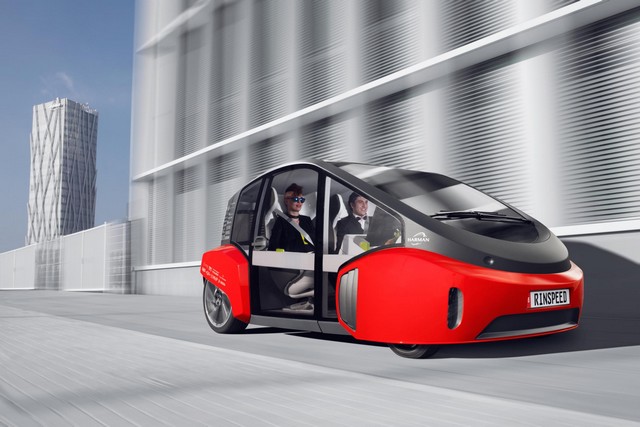
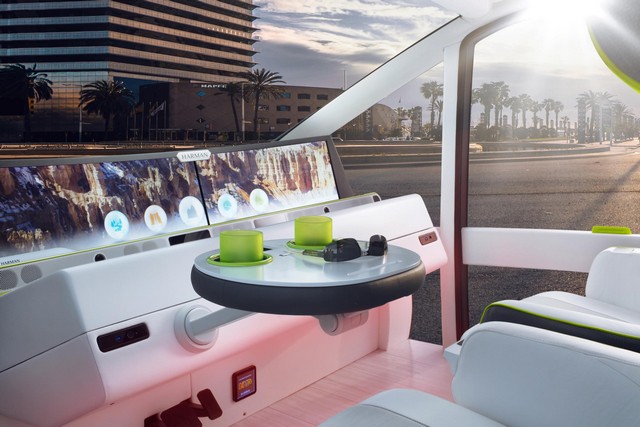
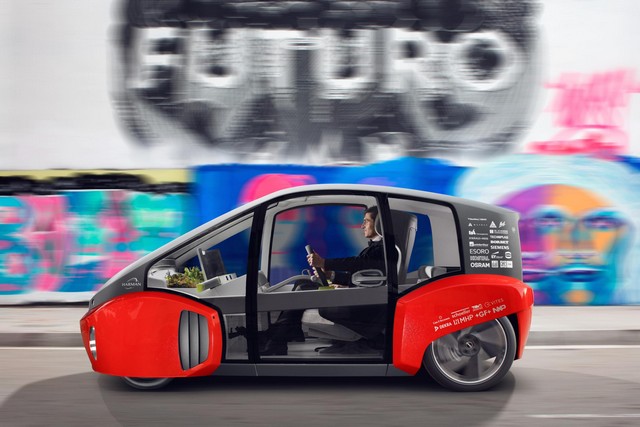
(Rinspeed images)
How green is my valley? Not that green apparently. Rinspeed called its "Oasis" concept for the Geneva Motor Show a "garden plot on wheels for the urban jungle." Huh? Frank M. Rinderknecht, the Swiss automotive visionary behind Rinspeed, envisions the "Oasis" concept as self-driving electric vehicle for the city and surrounding areas, a maneuverable speedster with an integrated small garden plot behind the windshield. Yes, you read that correctly. With its large glazed areas and shrouds on the front wheels, the machine can turn on its wheels with almost a zero radius thanks to a special steering angle, two in-wheel electric motors and torque vectoring, all developed by ZF. The twenty-third concept car from Rinspeed was again engineered by Swiss company 4erC and executed by Esoro. (3/1)
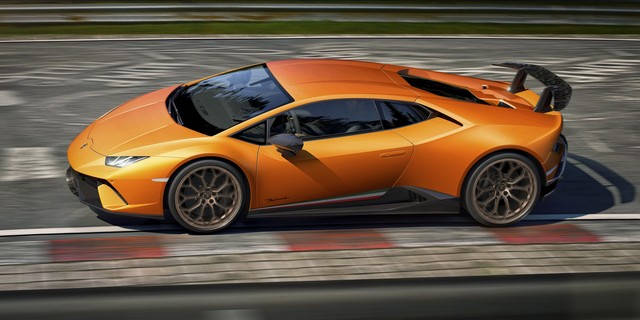
(Lamborghini)
The Lamborghini Huracán Perfomante is lighter, has more power (the 5.2-liter V10 has 640HP and 600 Nm of torque), and it has active aerodynamics, or “Aerodinamica Lamborghini Attiva” (ALA) as Lamborghini calls it, which contributes to its overall performance. The Huracán Perfomante accelerates from 0-100 km/h in 2.9 seconds and has a top speed of more than 325 km/h. It also lapped the Nürburgring Nordschleife in 6:52.01 min. Sticker price in the U.S.? $274,390.00. Editor-in-Chief's Note: The performance numbers of the Huracán Perfomante are indeed staggering, but it's time the world's automakers move on from setting lap times on the Nürburgring Nordschleife. Not only does it have little relevance to anything in the real world - even to the 1/10 of the "1 Percenters" who can actually afford the cars in question - but the manufacturer testing at the Nürburgring Nordschleife has become the "Swinging Dick-ism" of the auto industry, and it has now been officially played out. It's a great vacation for the True Believer enthusiasts from the various manufacturers that participate, but that's about it. –PMD (3/8)
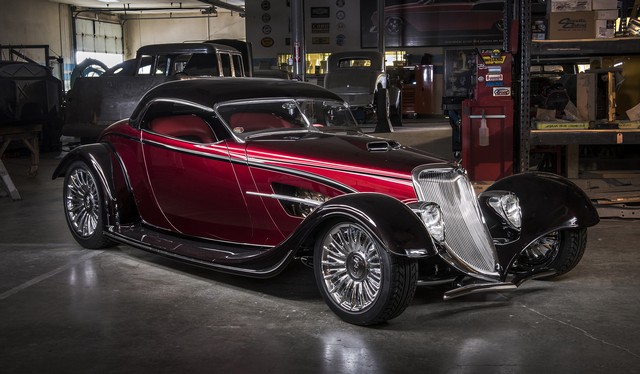
(Photo courtesy of PPG)
A custom 1933 Ford Roadster, the “Renaissance Roadster,” took home the coveted Don Ridler Memorial Award at the 65th Detroit Autorama. Owned by Buddy Jordan of San Antonio, Texas, and built by Steve Frisbie and his team at Steve’s Auto Restoration in Portland, Ore., the Renaissance Roadster garnered the first Ridler award for the Frisbie team. Established in 1963, the Ridler Award - the most prestigious and respected honor in the custom car world - is the highlight of the Detroit Autorama, presented to the most outstanding custom car or truck making its debut appearance at the show. (3/22)

(Lexus)
Editor-in-Chief's Note: My take on Lexus is that the executive leadership is bankrupt and simply incapable of doing anything different on behalf of the brand, and that the so-called Lexus "culture" will never go beyond "amazing" in-dealer experiences. And that's perfectly fine, as long as they stop trying to be something that they will never be. Toyota says that the all-new Lexus LS F SPORT "is based on an extended version of the brand’s premium global architecture for luxury vehicles (GA–L) platform – the stiffest that Lexus has ever developed – which offers enhanced handling, ride smoothness and cabin quietness," according to Lexus PR minions. We also noticed the boilerplate copy at the bottom of the release which started with the words: "Lexus' passion for brave design, imaginative technology, and exhilarating performance enables the luxury lifestyle brand to create amazing experiences for its customers." Uh, sure. Every auto manufacturer in the world could use those exact words; in fact, they use variations of this "surprise and delight" horseshit ad nauseam. We know Lexus is trying very hard and we do see some progress, but Lexus needs to be very careful of promising something that they can't deliver. The Lexus "MO" is still customer coddling at the dealer level. They wrote the book on it in fact. But the rest of the automotive world has caught on and for the most part caught up to that aspect of the business. And now Lexus is grasping at straws and throwing anything they can get their hands on at the wall to see what sticks. –PMD (4/5)
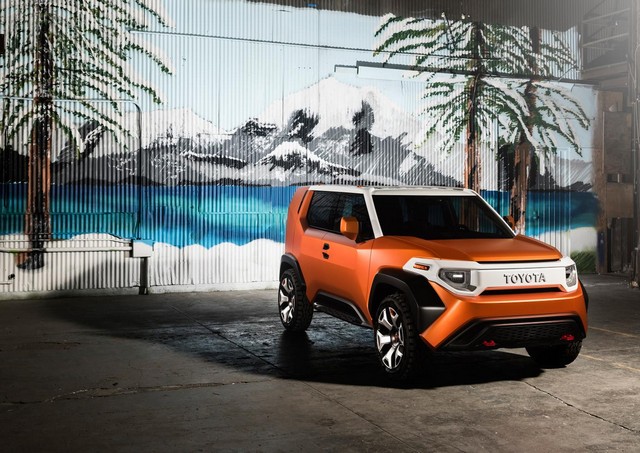
(Toyota)
Casualcore? Um, please no. The Toyota FT-4X, for “Future Toyota”-Four-Wheel Drive Crossover is a four-wheel drive "toolbox" - their words, not ours - created at Toyota’s Calty Design Research Inc. in Newport Beach, California. The FT-4X is "the seamless conduit of popular Casualcore – rather than hardcore – outings by anyone, anytime," according to Toyota PR minions. “As designers, we’re investing deep thought into the emotional connection with our cars,” said Calty President, Kevin Hunter. And now they're going to finesse and fine-tune the design, and then they're going after the Jeep Wrangler even before the Ford Bronco hits the market. (4/12)
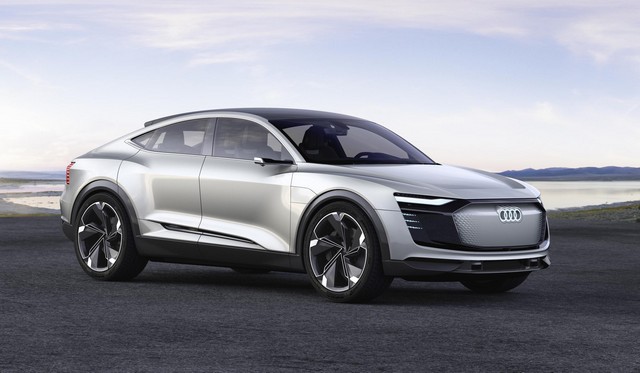
(Audi)
Electrification on a grand scale? It's coming, foks. Audi unveiled the Audi e-tron Sportback at Auto Shanghai, a four-door Gran Turismo concept that's a design study and technology demonstrator for yet another electric car in the Audi product portfolio. The concept comes with a 320 kW electric drive. Audi is coming out with its production e-tron SUV in 2018, with a range of over 500 kilometers (310.7 miles). The production version of the Audi e-tron Sportback will hit showrooms in 2019. (4/19)



(GM images)
Kudos to General Motors for restoring Durant-Dort Factory One, considered to be the company’s birthplace and epicenter of the global auto industry. Once home to the Flint Road Cart Co., established in 1886 by William Crapo “Billy” Durant and business partner Josiah Dallas Dort, it includes event space and a modern archive where future generations can learn about the innovators and risk takers who reinvented personal transportation. “Factory One sparked the global auto industry and was a catalyst in the formation of General Motors,” said Mark Reuss, GM executive vice president of Global Product Development, Purchasing and Supply Chain, who championed the project. “It preserves the stories of the early visionaries who built a brand-new industry in this city, within the very walls of where it happened.” Factory One is available to the public by appointment, with event space offered for rent for corporate, community, educational events and more. It can accommodate up to 300 people. Factory One’s archive is free to use and contains about 100,000 historical documents, photos and other artifacts related to carriage-building and early automobile manufacturing in the Flint area, as well as GM history. The new research library relocates extensive archives from nearby Kettering University (formerly General Motors Institute). To learn more about using the archive or hosting an event at Factory One, visit www.gmfactoryone.com or contact factory.one@gm.com. (5/3)
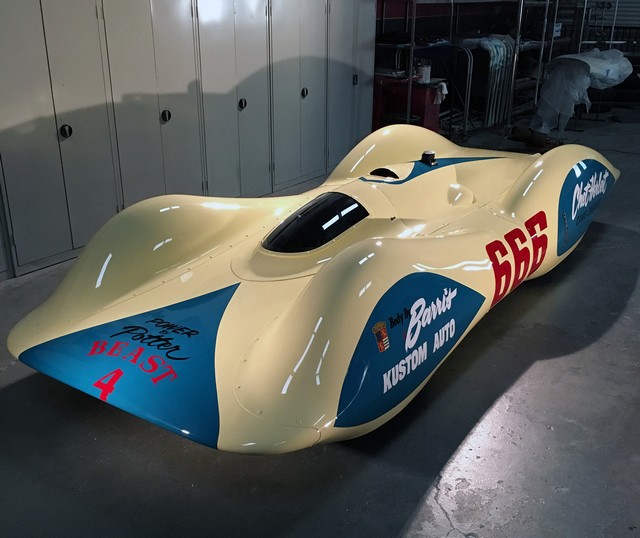
(PPG)
Editor-in-Chief's Note: Thanks to PPG for the following on the "Beast." -PMD
The restoration of the 1953 Beast IV Streamliner was commissioned by, and in collaboration with, the Wally Parks NHRA Motorsports Museum presented by the Automobile Club of Southern California in Pomona. The major restoration to return the low-slung vintage racer to glory was undertaken by Dan Webb and Ashley and Cory Taulbert at Webb Automotive Art, in Grand Blanc, Michigan. Webb entrusted elite custom car painter Darryl Hollenbeck and his crew at Vintage Color Studio, Concord, California, to create the radiant period-correct finish.
While the build of Beast IV took a quick three weeks, the restoration required fifteen months of intense research and meticulous craftsmanship. Much of the racer had deteriorated and few of its original parts remained. With museum curator Greg Sharp providing historical guidance on the project, the Webb and Hollenbeck crews worked primarily from vintage photographs and magazine articles to source rare parts, fabricate components and determine and reproduce the Beast’s exact colors. Craig Naff, of Woodstock, Va., blended the Beast’s remaining original sheet metal with new material to create a complete body; in effect, a canvas for Hollenbeck to paint. Consulting with PPG’s segment manager Steve Lehner and technical trainer Jim Kvatek, Hollenbeck and team members Darrell Schneider and Dennis Sayers selected several PPG automotive refinish products to replicate the car’s initial paint job. Eric Reyes’ steady hand provided the Beast’s elegant lettering and detailing.
“Color was a challenge,” said Hollenbeck. “There were color photos of the original Beast and we knew the car was blue and yellow, but the colors looked different in every photograph. So we compared the colors of other cars in photos with the Beast. We figured out the other cars’ colors and were able to come very close to equaling the Beast’s color. Then we generated dozens of blue and yellow samples and tweaked them to match the paint. The museum made the final decision and we gave the Beast its proper design and color scheme.”
According to Larry Fisher, the museum’s executive director, Beast IV was originally built in 1953 by Chet Herbert just in time to compete in that year’s Bonneville Speed Week and International Speed Trials. The aluminum-bodied, Chrysler Hemi-powered racer streaked across the Utah Salt Flats hitting a top speed of 246 mph and breaking eight long-standing performance records. Beast IV — the successor to Herbert’s original Beast (a motorcycle), Beast II and Beast III racers — ran until 1992 in a number of configurations with a variety of engines and reached speeds up to 289 mph. The racer then rested on its laurels; unused, it fell into disrepair and was acquired by David and Marianne Duthu. The couple donated Beast IV to the museum and agreed to fund the car’s badly needed restoration. Beast IV is now on permanent display with Beast III at the NHRA Motorsports Museum. (5/10)
Time of your life, eh, Sergio? The U.S. Justice Department sued Fiat Chrysler Automobiles NV alleging that the Italian-American auto maker used illegal defeat software to cheat on government emissions tests. This action comes despite a last-ditch proposal from the company presented to regulators that included a "fix" for the technology. One hundred four thousand 2014-2016 model-year Jeep Grand Cherokee sport-utility vehicles and Ram pickup trucks allegedly used the defeat software to pass government emissions tests and then pollute far beyond legal limits on the road. (5/24)
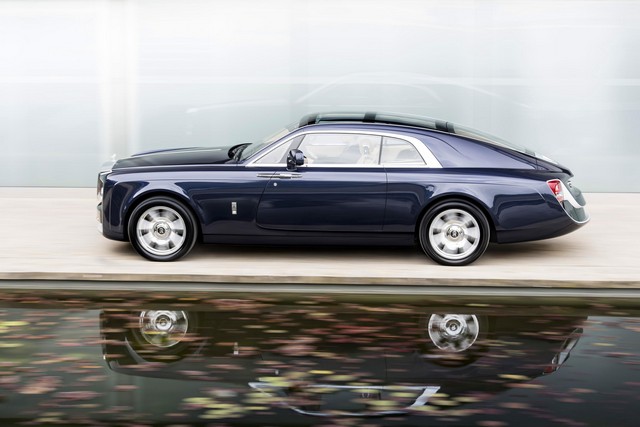
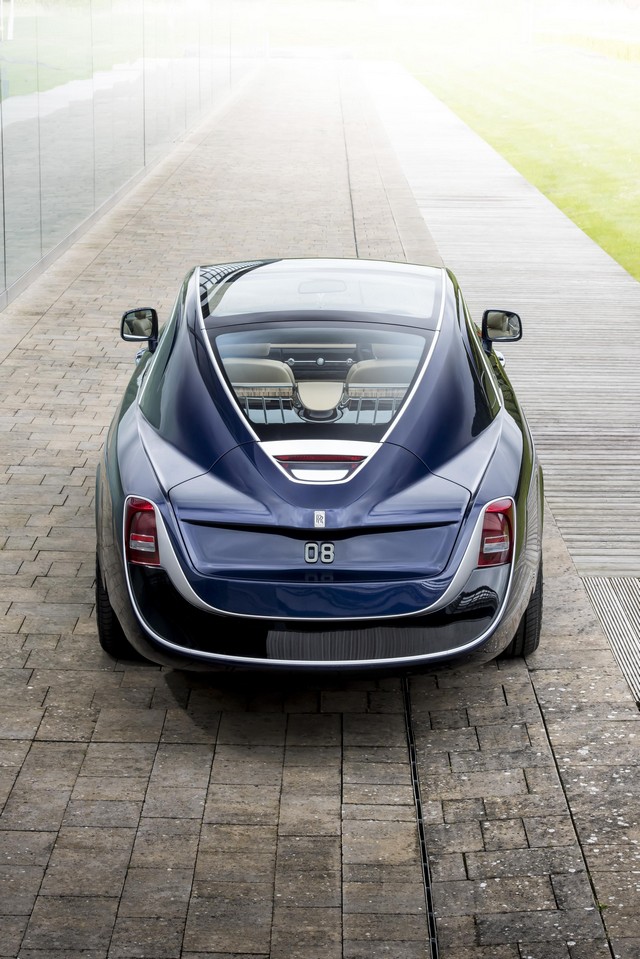
(Rolls-Royce images)
The name Rolls-Royce and "exclusivity" go hand in hand, but even that isn't enough for some customers. A "most valued customer" approached Rolls-Royce back in 2013 inquiring about creating a two-seat machine that would be unique to the world. The result? The Rolls-Royce "Sweptail," which was unveiled at the Concorso d'Elegance at Villa d'Este in Italy last weekend. Inspired by the beautiful coach built Rolls-Royce models of the 1920s and 1930s, the client's desire was for a coach built two-seater coupe featuring a large panoramic glass roof. "Sweptail is the automotive equivalent of Haute Couture," said Giles Taylor, Director of Design for Rolls-Royce Motor Cars. "It is a Rolls-Royce designed and hand-tailored to fit a specific customer. This customer came to the House of Rolls-Royce with an idea, shared in the creative process where we advised him on his cloth, and then we tailored that cloth to him. You might say we cut the cloth of the suit of clothes that he will be judged by." Well alrighty then!! (5/31)
Welcome to the jungle, Mr. Cook. Tim Cook the CEO of the Silicon Valley icon Apple, announced that the company is planning on developing autonomous driving technology to sell to the auto manufacturers. That's high-minded, noble, worthy and all, but as a colleague pointed out, what happens when they start dealing with the typical OEM purchasing department? (6/14)

(Audi)
Audi Sport GmbH announced that the new Audi R8 Spyder V10 plus is the fastest series-production convertible model available from the brand. The mid-engine sports car has a naturally-aspirated 5.2-liter 610HP V10, quattro permanent all-wheel drive and goes 0 to 100 km/h (62.1 mph) in 3.3 seconds and achieves a top speed of 328 km/h (203.8 mph). It's also available in a series of exclusive colors, including "Micrommata Green" (as shown). The base price in Germany? 207,500 euros. (6/14)
Editor-in-Chief's Note: Since WG and I have spent many years in the advertising profession in our past lives, we hold a special affection for great ad work when we see it. This TV commercial for Samsung VR is simply breathtaking. And brilliant. Enjoy it here. –PMD (6/21)


(Cadillac images)
Editor-in-Chief's Note: My current opinion of Cadillac has been well documented. Cadillac president Johan de Nysschen's drive to remake the brand in Audi's image is a work in progress, to put it mildly, and brand inconsistencies abound. Cadillac's biggest and most profitable seller is the Escalade, which besides having a real name has a street cred and on-the-road presence that are undeniable. Next up is the XT5, which is the reimagined crossover designed to capitalize on American consumers' insatiable desire for SUVs and crossovers, and it is doing very well for that reason. The rest? The ATS is missing in action, the CTS is suffering from America's boredom with cars, and the CT6 is the Audi-BMW-Mercedes-Lexus wannabe that, though technically interesting, lacks fundamental appeal. The V-Series cars are an island unto themselves in the Cadillac portfolio - they're outstanding efforts by the True Believers at GM Engineering and Product Development - but they lack context with the rest of the product line, no matter how hard Cadillac operatives try to insist that the tenuous relationship Cadillac has with racing confirms their validity. The "forgotten" Cadillac is the front-wheel-drive XTS (also available with AWD with electronically controlled limited-slip differential), which receives technical, chassis and appearance updates designed to heighten its appeal for 2018. Stuff our readers might be interested in: The updated chassis has revised wheel designs for both 19” and 20” tires; Brembo front disc brakes are standard; new exterior styling tweaks include new fenders, freshened front and rear fascias, grille, and the addition of LED headlights and taillamps; the usual updates in interior color and trim choices are available as well. The XTS Platinum V-Sport, which features an exclusive twin-turbo engine and all-wheel drive, is also still available. Far from being the "forgotten" Cadillac, I view the XTS - and the Escalade - as being closest to what Cadillac should be. Unapologetic American luxury with distinctive, compelling design is still a very potent and valid product premise. I even view it in better light than the much-ballyhooed CT6, because it isn't trying so damn hard to be something it isn't, which is a German luxury car wannabe. The XTS deserves better from Cadillac marketing operatives. –PMD (6/21)
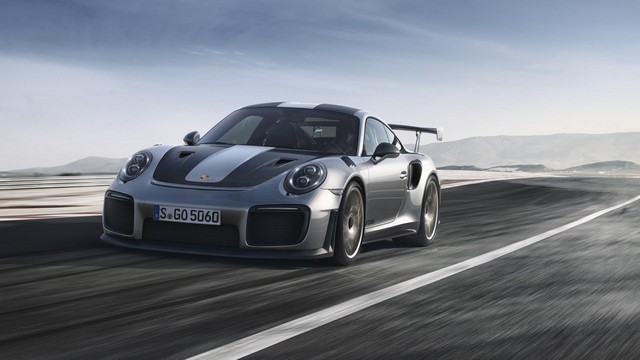
(Porsche images)
Hang on to your wallets. This is the 2018 Porsche 911 GT2 RS, billed by the German auto manufacturer as "the fastest and most powerful street-legal 911 model ever." The 3.8-liter twin-turbo flat-six engine delivers 700HP and 553 lb.-ft. of torque. Weighing 3,241 lbs. with a full tank of fuel, the rear-wheel-drive GT2 RS accelerates from zero to 60 miles per hour in 2.7 seconds and reaches a top track speed of 211 miles per hour. If you really want to be the biggest tool in the shed, you can order the optional Weissach Package, which reduces the weight by nearly 40 pounds. This package includes the roof and anti-roll bars made of carbon fiber, as are the end links on both axles; and forged magnesium wheels that reduce both overall and unsprung weight by over 25 pounds. When equipped with the Weissach Package, the carbon fiber weave of the luggage compartment lid and the roof are left largely exposed, and are painted with a centrally placed decorative strip in the vehicle color for a distinctive look. And this being Porsche - aka "The King of the Gougemeisters" - the optional Weissach Package will set you back an additional $31,000 over the base MSRP of $293,200 (excluding the $1050 delivery charge, of course). Oh, and there's a special titanium 911 GT2 RS Chronograph created exclusively by Porsche Design for 911 GT2 RS owners that is super-trick too. The 911 GT2 RS and watch are produced and customized in line with each customer's wishes and are delivered together, if you must know. The 2018 911 GT2 RS will reach U.S. dealers in early 2018. (6/28)


 Ford, GM, Toyota. Editor-in-Chief's Note: After that painful display on Sunday, when the cavernous confines of the Indianapolis Motor Speedway were barely dotted with the intermittent fans - and that's putting it charitably - who managed to wander in off the street to see a NASCAR race that clearly only a handful of people actually cared about, it's obvious that NASCAR's chief enablers - Ford, GM and Toyota - have some 'splainin' to do. As in, why do these manufacturers continue to prop up NASCAR to the tune of hundreds of millions of dollars per year, collectively? What are they getting exactly? Brand recognition? Please. With a declining core audience that can't even be bothered to attend races and with declining television ratings numbers, NASCAR steadfastly refuses to initiate the fundamental changes that it needs in order to survive, let alone thrive. Too many races by at least ten. Too many repeat visits to the same tracks. Too many bad decisions. Too much irrelevant technology. The NASCAR "greatest hits" list of mediocrity is growing by the week. And the participating manufacturers continue to blithely line NASCAR's coffers with little rhyme or reason, and for what? Remind me again? NASCAR claims that its "manufacturers' council" has opened the lines of communication and is making the sport better, with everyone gaining a voice. But it matters little at this juncture because right now NASCAR is caught in an accelerating downward spiral. In fact if it continues at the pace it's going NASCAR will go back to being a regional nostalgia racing series in five years. Or less. The manufacturers could demand changes and force NASCAR's hand, but so far they seem perfectly willing to play the go-along-to-get-along card. And they do so at their peril. –PMD (7/26)
Ford, GM, Toyota. Editor-in-Chief's Note: After that painful display on Sunday, when the cavernous confines of the Indianapolis Motor Speedway were barely dotted with the intermittent fans - and that's putting it charitably - who managed to wander in off the street to see a NASCAR race that clearly only a handful of people actually cared about, it's obvious that NASCAR's chief enablers - Ford, GM and Toyota - have some 'splainin' to do. As in, why do these manufacturers continue to prop up NASCAR to the tune of hundreds of millions of dollars per year, collectively? What are they getting exactly? Brand recognition? Please. With a declining core audience that can't even be bothered to attend races and with declining television ratings numbers, NASCAR steadfastly refuses to initiate the fundamental changes that it needs in order to survive, let alone thrive. Too many races by at least ten. Too many repeat visits to the same tracks. Too many bad decisions. Too much irrelevant technology. The NASCAR "greatest hits" list of mediocrity is growing by the week. And the participating manufacturers continue to blithely line NASCAR's coffers with little rhyme or reason, and for what? Remind me again? NASCAR claims that its "manufacturers' council" has opened the lines of communication and is making the sport better, with everyone gaining a voice. But it matters little at this juncture because right now NASCAR is caught in an accelerating downward spiral. In fact if it continues at the pace it's going NASCAR will go back to being a regional nostalgia racing series in five years. Or less. The manufacturers could demand changes and force NASCAR's hand, but so far they seem perfectly willing to play the go-along-to-get-along card. And they do so at their peril. –PMD (7/26)
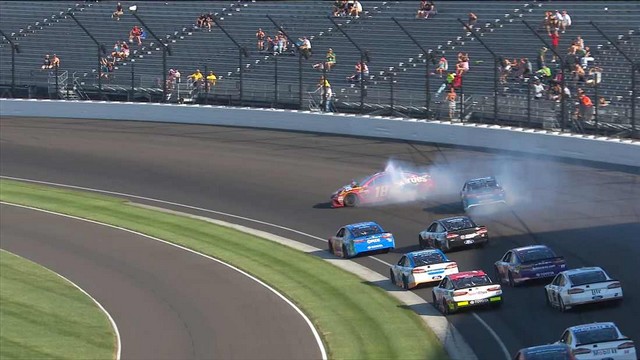
(Getty Images)
The attendance at the Indianapolis Motor Speedway was beyond embarrassing for NASCAR, in fact, it was pathetic. (7/26)

(Bollinger Motors)
From the "We'll Believe It When We See It" File. This is the Bollinger B1, which the company is calling "the world's first fully working prototype of an all-electric sport utility truck." (7/26)
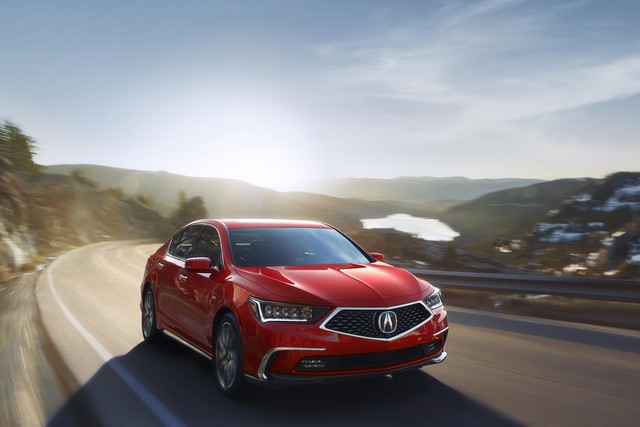


 Honda/Acura. Editor-in-Chief's Note: This is the new "face" - featuring a "diamond pentagon" grille - of the 2018 Acura RLX, Honda's continuing lame attempt at doing a large-ish (sort of) luxury car. The new, top-of-the-line RLX Sport Hybrid is "supercar inspired" because it has 377HP, Super Handling All-Wheel-Drive and is (allegedly) "further optimized based on NSX leanings," whatever the hell that means. And the standard RLX has AcuraWatch enhanced with Traffic Jam Assist, an Acura first. Alrighty, then. This is Acura - yet again - beating a dead horse with the RLX. When is Honda/Acura management going to give this charade up and do a clean sheet design for a proper large car that actually has a shred of desirability to it? My guess is probably never, because they seem to be flat incapable of it. To top it all off, Acura PR minions had the following in the press release: "The 2018 Acura RLX is complimented by three new exterior colors including two premium paint offerings – Brilliant Red Metallic and Majestic Black Pearl." Other than the NSX - which is way too heavy, by the way - the management at Honda/Acura is clearly inept. In fact collectively they well and truly suck. And in case you're wondering, that is not a compliment. –PMD (8/9)
Honda/Acura. Editor-in-Chief's Note: This is the new "face" - featuring a "diamond pentagon" grille - of the 2018 Acura RLX, Honda's continuing lame attempt at doing a large-ish (sort of) luxury car. The new, top-of-the-line RLX Sport Hybrid is "supercar inspired" because it has 377HP, Super Handling All-Wheel-Drive and is (allegedly) "further optimized based on NSX leanings," whatever the hell that means. And the standard RLX has AcuraWatch enhanced with Traffic Jam Assist, an Acura first. Alrighty, then. This is Acura - yet again - beating a dead horse with the RLX. When is Honda/Acura management going to give this charade up and do a clean sheet design for a proper large car that actually has a shred of desirability to it? My guess is probably never, because they seem to be flat incapable of it. To top it all off, Acura PR minions had the following in the press release: "The 2018 Acura RLX is complimented by three new exterior colors including two premium paint offerings – Brilliant Red Metallic and Majestic Black Pearl." Other than the NSX - which is way too heavy, by the way - the management at Honda/Acura is clearly inept. In fact collectively they well and truly suck. And in case you're wondering, that is not a compliment. –PMD (8/9)

(PPG)
A customized 1951 Ford won the coveted Winfield Award for automotive excellence at the 18th annual PPG Syracuse Nationals held July 14–16 at the New York State Fairgrounds. Owned by Bruce Leven of Auburn, Wash., built by Craig Wick and the team at Wicked Fabrication and painted by John Byers, Byers Custom—both also from Auburn—the dazzling Ford drew the approval of the crowd when the award was announced. (8/9)



 (gminsidenews images)
(gminsidenews images)
Editor-in-Chief's Note: Once upon a time, Campbell-Ewald, the ad agency (one of my advertising alma maters) that handled the Chevrolet account for GM, did a series of billboards for the Dream Cruise (when it was still cool) that still resonate to this day. They were memorable, creative and way too much fun apparently, because they haven't been seen since, representing yet another blown opportunity by GM marketing. And since GM marketers are too lame to know a great thing even when they actually participated in the creation way back when, we decided to show a few of them here. –PMD (8/16)
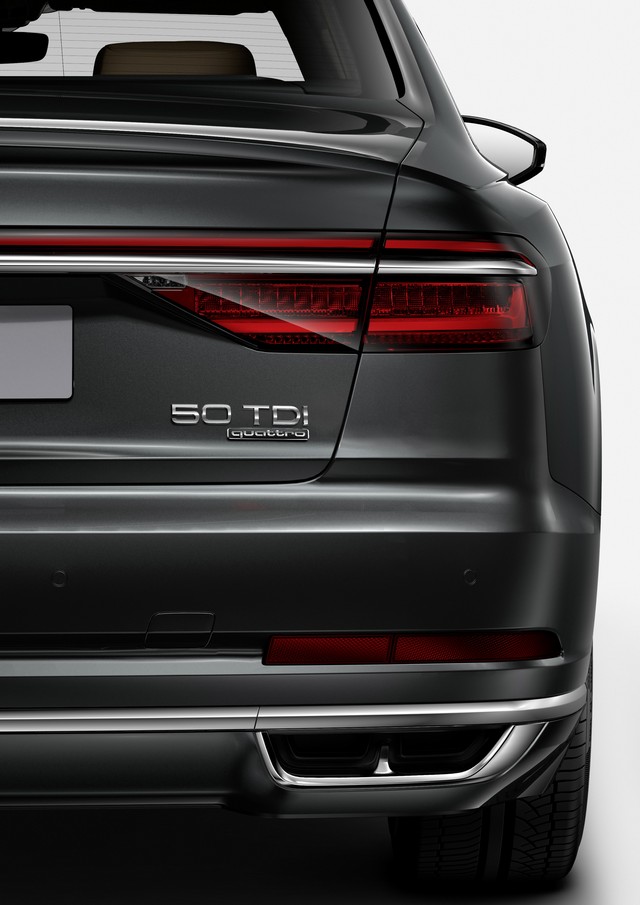
(Audi)
So we received the following press release from Audi today (8/23) and we're going to let you read it in its entirety, with Peter's comments at the end (WG):
Audi is adopting a standardized nomenclature for the power output designations of its worldwide range of automobiles. The names of the model series – from Audi A1 to Audi Q7 – will remain unchanged. Within the model families, combinations of two numbers will replace the various type designations previously used. The new designations stand for the specific power output and apply both to cars with combustion engines and to e-tron models with hybrid and electric drives.
The reference value for the new model designations is the power output of the individual model in kilowatts (kW). Audi is thus subclassifying its model range into different performance levels – each identified by a two-numeral combination. For example, the numeral combination “30” will appear on the rear of all models with power output between 81 and 96 kW. And “45” stands for power output between 169 and 185 kW. The top of the Audi model range is the performance class above 400 kW, which is identifiable by the number combination “70”. In each case the numerals appear along with the engine technology – TFSI, TDI, g-tron or e-tron.
The number combinations identifying the performance levels in the Audi product range increase in increments of five, and they represent the hierarchy within both the respective model series and the brand’s overall model range. According to the new nomenclature, in the future the spectrum will range from the Audi Q2 30 TFSI with 85 kW (combined fuel consumption in l/100 km: 5.4 - 5.1*; CO2 emissions in g/km: 123 - 117*) to the Audi Q7 50 TDI with 200 kW (combined fuel consumption in l/100 km: 6.4 - 5.9*; CO2 emissions in g/km: 168 - 154*). A special place in the line-up is occupied by the high-end, high-performance S and RS models and the Audi R8 (combined fuel consumption in l/100 km: 12.5 - 11.4; combined CO2 emissions in g/km: 292 - 272). They will retain their classic names in reference to their top position in the model range.
“As alternative drive technologies become increasingly relevant, engine displacement as a performance attribute is becoming less important to our customers. The clarity and logic of structuring the designations according to power output makes it possible to distinguish between the various performance levels,” explains Dr. Dietmar Voggenreiter, Board of Management Member for Sales and Marketing at AUDI AG.
The changes will kick off with the new Audi A8 generation in the fall of 2017. First among the two six-cylinder engines to be redesignated will be the 3.0 TDI with 210 kW – as the Audi A8 50 TDI (combined fuel consumption in l/100 km: 5.8 - 5.6**; combined CO2 emissions in g/km: 152 - 145**), and the 3.0 TFSI with 250 kW – as the Audi A8 55 TFSI (combined fuel consumption in l/100 km: 7.8 - 7.5**; combined CO2 emissions in g/km: 178 - 171**).
In the coming months, all Audi model series launched on the market will be assigned the new performance designations beginning when they are offered for sale. Audi will change the designations of the remaining model series in the current product range in time for the new model year changeover in summer of 2018.
Editor-in-Chief's Note: Excuse me but, WTF? The convoluted bullshit (above) indicates the kind of delusional self-absorption and ridiculous overthink that only a German automaker could come up with. The new engine designations are stunningly nonsensical, except to the Audi engineering bureaucrats who came up with them. In an automotive world already burdened with too much alphanumeric mumbo jumbo, this is unmitigated bullshit in its most egregious form. Take a bow, Audi overlords, you have managed to take something that was at least efficiently effective and turned it into a Sparkling Shit Show. Nicely done. –PMD (8/23)

(Bentley)
This is all you need to know about the new Bentley Continental GT: Powered by an enhanced version of the 6.0-liter W12 TSI engine with 626HP and 664 lb.ft. of torque and with a dual-clutch, eight-speed gearbox, it's fast. 0-60 mph in 3.6 seconds with a top speed of 207 mph. It's also one of our all-time favorite cars. Over and out. (8/30)
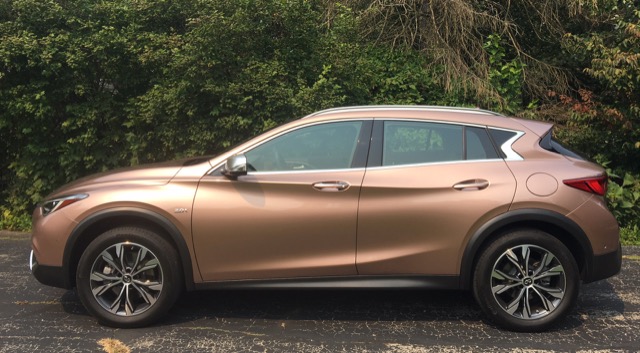
Doesn't have a point of view...knows not where it's going to...
Editor's Note: This week, we drove the 2017 Infiniti QX30 Premium AWD, Infiniti's entry in the "small luxury crossover" category. Our driver was outfitted in Liquid Copper Metallic (think psychedelic Mary Kay car for the 21st century), which was just wrong, wrong, wrong. The QX30 is the first product of Renault-Nissan's partnership with Mercedes, and it is based on the Mercedes GLA 250. It shares a turbocharged 2.0-liter 4-cylinder engine with both the Mercedes GLA and CLA, and features Mercedes' 7-speed automatic dual-clutch transmission. A criticism of the small crossover category is space, and I would have to agree. I thought the whole point of a "non-car" was utility, and there is just not enough utility in the QX30. The interior is nice enough, it has all the features you'd expect to be considered entry-level "luxury," etc. But once you leave the front seats, it is a bit on the small side. Sure, it gets better mileage than a regular crossover or SUV, but the sacrifice in utility just isn't worth it for me. It passes the basic Costco test but Home Depot? Not so much. So, I am probably down on the category even more than I am down on the QX30 specifically. (In addition to the GLA, the QX30 is designed to compete with the Audi Q3 and BMW X1.) But I am neutral on the Infiniti QX30 to the point of disinterest. There is just nothing special about it. No real personality or attitude. It is competent and it is executed well enough, but it feels so much like a "me-too" vehicle. There is just no there there. –WG (9/6)
Adherence to Brand Image: As The Autoextremist said in June in the annual AE Brand Image Meter column, "everything about Infiniti seems like Nissan operatives are phoning it in, and devoid of a single original thought. I consider Infiniti a 'ghost' brand, one that’s invisible except for the select few who have been issued the special glasses from the factory so that they can appreciate the inherent goodness of the brand. Brand Image? A well-intentioned afterthought." It's not that the QX30 is bad, in fact, it's actually pretty good. It allows Nissan to check the "small luxury crossover" box and therefore be present and accounted for. But I just don't know what the compelling reason for purchase is over anything else in the segment (and who knows if we even need that segment to begin with, but that's another story for another day). "No compelling reason for purchase" basically describes all of Infiniti. It's a real nowhere brand, sitting in its nowhere land... -WG
Editor-in-Chief's Note: I concur. (9/6)
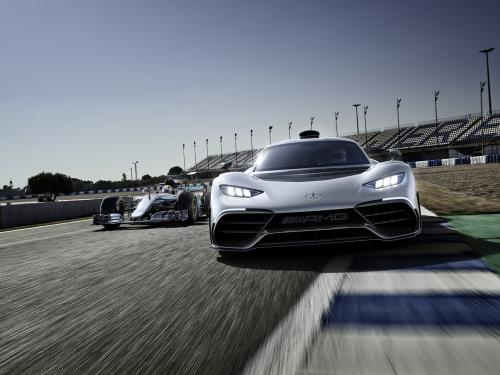
(Mercedes-Benz images)
What's the point? And to what end? And why? The Mercedes-AMG Project ONE made its debut at the Frankfurt Motor Show. Mercedes PR minions are saying that for the first time, this "two-seater supersports show car brings the very latest and efficient, fully-fledged Formula 1 hybrid technology from the race track to the road almost par for par to represent the highlight of AMG's 50th anniversary." The high-performance hybrid produces over 1,000HP and can reach speeds in excess of 217 mph (350 km/h). Mercedes insists that the machine "combines outstanding racetrack performance and day-to-day suitable Formula 1 hybrid technology with exemplary efficiency. This is a world first." Mercedes-AMG was responsible for the overall development of the Project ONE; it was carried out in close cooperation with Mercedes-AMG High Performance Powertrains in Brixworth and with the Mercedes-AMG Petronas Motorsport Formula 1 team in Brackley. Editor-in-Chief's Note: Bringing F1 technology from the track to the street is a nonstarter. What's the point? And to what end? So the biggest swinging dick "enthusiasts" can fulfill their destiny by spending millions on another trophy car that never sees the light of day - or the road - and sits in the garage just long enough before heading to auction? The Project ONE is only "a world first" until the next trophy supercar emerges so the biggest tools in the shed can come out of the woodwork to clamor for it. And then what? What a monumental waste of time and money. –PMD (9/13)
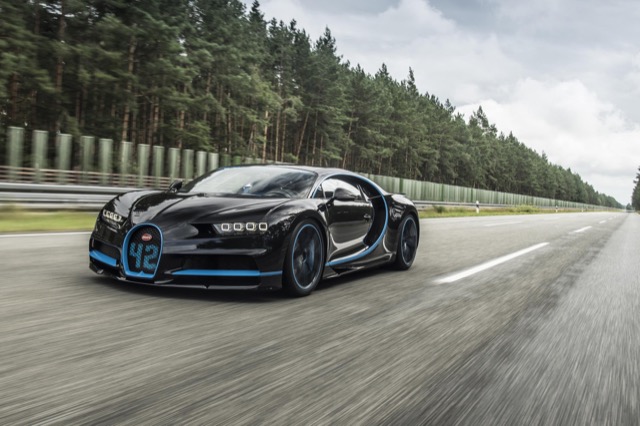
(Bugatti images)
A Bugatti Chiron accelerated from a standing start to 400 km/h and braked back to a standstill in just 42 seconds (41.96). This is a new world record and the fastest time ever reached and officially measured for a production vehicle. The run was supervised and officially certified by SGS-TÜV Saar, part of SGS, the world leader in inspection, testing, verification and certification. The 1,500 PS Chiron completed the run in a distance of only 3.112 kilometers. Juan Pablo Montoya was the driver for the new world record. The 0-400-0 performance run is the first step on the way to a new world speed record for production vehicles, which Bugatti intends to set in 2018 with the Chiron, which made its debut in 2016. Three hundred of these super sports cars - which are being produced in a limited series of 500 vehicles - have already been sold. (9/13)
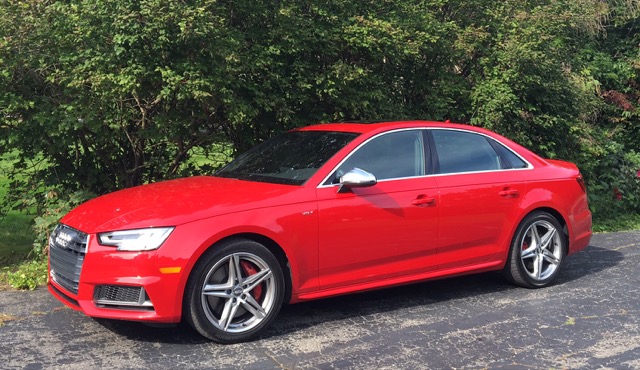
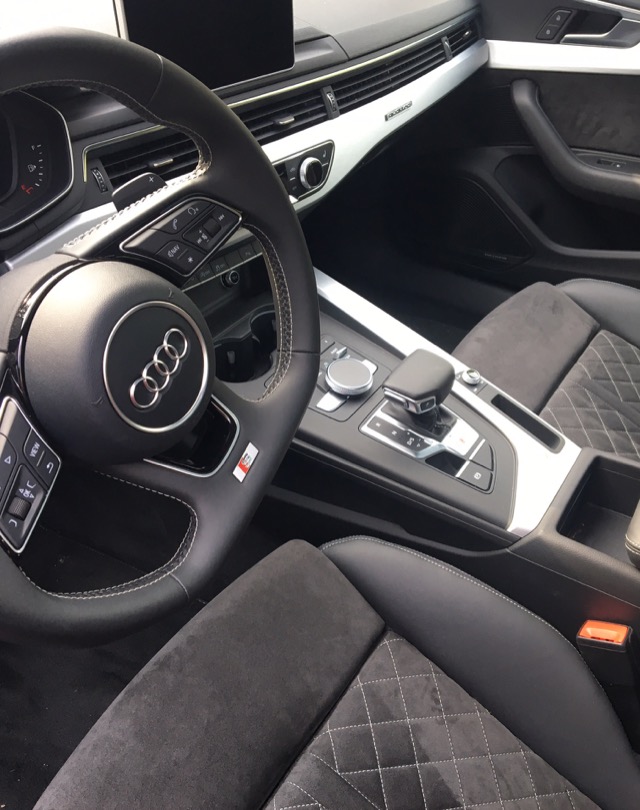
The 2018 Audi S4?
Yes, please.
So, as usual, Peter asked me to write a few words on this week’s driver, the 2018 Audi S4. Those are the best two I can think of. There really isn’t much to say (well, actually, there is a lot to say, but why write when I could be driving???). We are enjoying classic early fall here in Michigan - warm, sunny days with cloudless blue skies and clear, chilly nights that prophesy what’s to come. The leaves are just starting to turn, and the fall flowers are in full bloom. These are the days when you linger a little longer outside and make excuses to divert from your usual route - in my case, driving the S4. It’s not just that it’s a blast to drive (it is). Or that it’s luxurious without being showy (it’s that too). It’s that it’s just so well executed. Several years ago, Audi used the tagline “Never follow.” They wore their differences from Mercedes and BMW as a badge of honor. The True Believers at Audi have always displayed a quiet confidence about who they are and where they're going. I owned a few Audis way, way back in the day (before I become a Mercedes girl). I don’t think I really appreciated what they were trying to do with the brand like I do now. Cars like the 2018 S4 make the Audi vision come to life. I could go on, but why? So here are three more words. Damn. Near. Perfect. -WG
Editor-in-Chief's Note: I leased a V8-powered Audi S4 as my personal driver several years ago, and I loved everything about it. Despite Audi's meanderings of late - I wasn't exactly thrilled with Audi in last June's AE Brand Image Meter, because they seem to get easily sidetracked when it comes to image wrangling - when they put their minds to it, they still build some magnificent cars. Everything about this latest S4 is executed to a fine degree. Yes, the performance is there - in fact it's more than plenty enough for real world driving - but it's the way the car is executed and finished inside and out that's impressive. Audi has a distinct point of view that's different from BMW and Mercedes - which often times is better, head-to-head - and I think they consistently nail the sweet spot, especially with their performance machines. Do I miss the V8? Well, yeah, but I'm a sucker for a fine running V8. But in terms of performance this new S4 lacks nothing, in fact it feels quicker and of course it's noticeably lighter on its feet. And the rest of the car is so well executed that it would be easy to live with one for my daily driver. Damn. Near. Perfect. Indeed. –PMD (9/13)
Saad Chehab, the new chief of marketing for Kia was asked the following question by David Undercoffler, of Automotive News: "The Stinger is perhaps the greatest jump to date from Kia's heritage as an econobox-maker. How do you handle that from a marketing perspective?" His response? "You're talking about rear-wheel drive, twin-turbocharged, Brembo brakes, gran turismo styling, 0 to 60 faster than a Porsche Panamera [V-6], top speed braking faster than an Audi A7, looks that crush everything. When you look at this vehicle, you get the sense of the looks: the stance of Grace Kelly, the timeless elegance of a Sophia Loren and then the athletics of a gazelle. When you have all that put together, heck, yeah, I'm excited about advertising a car like this. It gives me the chills about the attitude of this brand, that it can do anything, anytime for anyone. And you should expect even more from this brand." Editor-in-Chief's Note: Does the ridiculous, over-the-top hype sound familiar? It should. This guy plied his trade at FCA under Olivier "I'm a genius, just ask me" Francois. And excuse me, a "stance of Grace Kelly," "elegance of Sophia Loren" and "looks that crush everything." Are you frickin' kidding me? Are we talking about the same monument to derivative design that borrows everything that wasn't tied down from about three other cars? That Stinger? Ah well, delusional thinking and unbridled hubris are always a blast to write about. –PMD (9/20)

(Cadillac)
Editor-in-Chief's Note: Cadillac spent last week touting its Super Cruise hands-free technology, which is available on the CT6, with a press release and with orchestrated media drives across the country: “Super Cruise™ is a more technologically advanced hands-free driving solution, which in terms of capability, integration and validation is uniquely focused on customer convenience and safety,” said Johan de Nysschen, Cadillac president. “Cadillac’s philosophy is to elevate driving. Super Cruise™ enables safe, simple hands-free driving for the highway.” Elevate driving? Does anyone see anything wrong with this picture? Certainly the auto journalists who waxed on poetically about Super Cruise missed it. Remember, folks, Cadillac fancies itself as an Americanized version of Audi, thanks to de Nysschen, who was largely responsible for the Audi success story here in the U.S. before he came to Cadillac (his brief stop at Infiniti amounted to a cup of coffee and doesn't count). Cadillac is supposed to be all about making machines for enthusiasts who love to drive, er, uh, wait a minute, that was just one of the multiple strategies mentioned over the course of de Nysschen's tenure when they were talking about the "V" cars. But now that GM has decided to launch its latest "hands-free" technology in a Cadillac, I guess we're supposed to forget about all of that, apparently. Now, am I to assume that Cadillac's new strategy is as a technology platform? And how long will that last? Or should we just check the prevailing winds in a couple of months? Ah well, as long as GM's luxury division keeps selling Escalades and XT5s, I guess it really doesn't matter. –PMD (10/4)
Elon Musk. Editor-in-Chief's Note: So now we have to live through the hand wringing in the media about Tesla missing the production targets for the Model 3 by a mile. As if this was some sort of a surprise? There wasn't even a remote possibility that Musk would reach the super-inflated - and overhyped - production targets for the Model 3 that he shouted from the rooftops and pounded into his acolytes in the adoring media. And this just in, he never will. It was sheer fantasy from the get-go. As Charley Grant in The Wall Street Journal wrote on 10/3: "Still, Tesla’s persistent inability to forecast its results should raise concerns. Tesla issued the forecast of 1,500 cars just two months ago and missed it by over 80%. Monday’s announcement marked the third time since January that Tesla has cited production issues as a reason for a missed forecast, yet Tesla is no startup—the company has been in business since 2003." Tesla's day in the sun is coming to an end. But it wasn't fun while it lasted. –PMD (10/4)
Well I won't back down, no I won't back down
You could stand me up at the gates of hell
But I won't back down
Gonna stand my ground, won't be turned around
And I'll keep this world from draggin' me down
Gonna stand my ground and I won't back down
Hey baby there ain't no easy way out
Hey I will stand my ground
And I won't back down
No, I won't back down
- RIP Tom Petty (10/4)
Sergio Marchionne. Editor-in-Chief's Note: As I mentioned a month ago, when Marchionne got his hands on Ferrari it was going to get ugly, real quick. The continued push into more Ferrari "worlds" and tchotchke boutiques was inevitable, but changing the name of the California, a name with authentic Ferrari heritage, to Portofino - which sounds like a special option package suited for a Chrysler minivan and was actually the name of a Chrysler concept of a few years ago - was simply inexcusable. And as predicted, Marchionne is going to ramp up Ferrari production by 40 percent because, well, greed is good, image be damned. (He also said he'd never sell off Jeep separately, but that doesn't mean he won't bundle Jeep, Ram truck and the minivan plant, and sell it all to Hyundai.) And now, it's time for a Ferrari SUV. “We’re dead serious about this,” Marchionne told reporters Monday at the New York Stock Exchange. He referred to it as the “FUV” model and it's 30 months away, Bloomberg reported. (I wonder what those initials stand for, Sergio, the Fuck You Vehicle?) “We need to learn how to master this whole new relationship between exclusivity and scarcity of product, then we’re going to balance this desire to grow with a widening of the product portfolio.” This just in, Sergio, there's no way in hell you and your minions will "master" anything about the relationship between exclusivity and scarcity of product, because you've already blown it to smithereens right out of the gate. Marchionne is hell-bent on turning Ferrari into just another car company, and he's well on his way. We don't call him the Carpetbagging Mercenary-in-Chief for nothin', folks. –PMD (10/11)
To promote its new six-year/72,000-mile bumper-to-bumper warranty, VW has introduced a new TV spot called Rain. Created by Deutsch L.A., the spot harkens back to VW's quintessential role in America's counter cultural heyday, featuring the classic VW microbus and Beetle, lots of hippies, and a whimsical recreation of a 1960s music festival, all set to Joe Cocker's classic rendition of "With a Little Help from My Friends." Missing from the spot? Any mention of VW's current model lineup. We applaud VW for this. All too often, automotive clients – yeah, that means damn-near every one of you so-called auto marketing executives working today – lose sight of the concept of branding, getting bogged down instead in product features and details, when in fact there are times when not showing a vehicle can be extremely powerful. (But then again, shoving 50 lbs. of information into a 10-lb. spot is a particular specialty of automotive marketing hacks everywhere; it's like a gift, in fact.) At the end of this spot, a voiceover plugs the new VW warranty, saying, "VW drivers have always put others first, now we are returning the favor." Although not admitting it, VW is clearly trying to get consumers to move beyond its diesel scandal and focus on the VW brand – and its unique heritage – that so many people had such fondness for before things got decidedly ugly. But then again, things were looking up for VW even before this spot. Sales are up for the first nine months of 2017, and the power of the VW brand seems to be impervious to any residual bad juju accrued during the scandal. In September, VW extended the new warranty to its entire 2018 lineup, except for the battery electric e-Golf. Kudos to those involved in this memorable spot. (10/18)


(Porsche images)
What's next? Are they going to change the name PDK to Sportomatic? This is the 2018 Porsche 911 Carrera T. Porsche says that it is "reinvigorating the concept of the puristic 911 T model from 1968" with less weight, a manual transmission with a shorter constant transaxle ratio and a standard mechanical rear differential lock for heightened driving pleasure. The 911 Carrera T ("T" stands for Touring) is also equipped with several performance-enhancing features that are not available on the standard 911 Carrera. Based on the 370HP 911 Carrera Coupe, the new 911 Carrera T emphasizes lighter weight and a more sport feel. The rear windshield and rear side windows are made of lightweight glass, and door opener loops on the inside replace the conventional door openers (like the RS models). Like the 911 GTS models, sound insulation has been reduced. Weighing 3,142 pounds, the 911 Carrera T is the lightest model in the 911 Carrera range. The twin-turbo 3.0 flat-six develops 370HP and 339 lb-ft of torque. With the manual transmission with a shorter constant transaxle ratio and the mechanical rear differential lock, the 911 Carrera T accelerates from zero to 60 mph in 4.3 seconds, 0.1 second quicker than the standard 911 Carrera. The manual version reaches a top track speed of 182 mph. When equipped with the optional PDK transmission, the 911 Carrera T reaches 60 mph in 4.0 seconds using the standard launch control feature and has a top track speed of 180 mph. The 2018 911 Carrera T is now available for ordering and is expected to reach U.S. dealers by March 2018. The base MSRP is $102,100. Editor-in-Chief's Note: All that for a tenth of a second? As I've said many times before, Porsche's ability - and out and out gall - to extract ever more money from its faithful is simply mind-blowing. Back in the day Porsche had the 911T, the 911E and the 911S, in that order. Now Porsche is trying to assign new gravitas to the "T" for the people who just can't quite step up to an "S"? Please. Porsche marketers are the cynical Master Manipulators of this business. Their ability to create desirability by designing smoke-and-mirrors packages calculated to entice its followers knows no bounds. And as long as enough of the faithful keep buying, Porsche marketers are going to keep coming up with them. –PMD (10/25)
Editor-in-Chief's Note: Check out this drone video of the Atlanterhavsvegen - Atlantic Road - in Norway, dubbed "the world's most beautiful road." Worth it. –PMD (10/25)



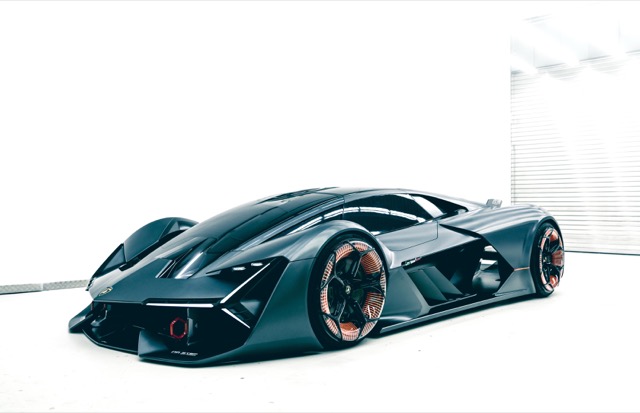
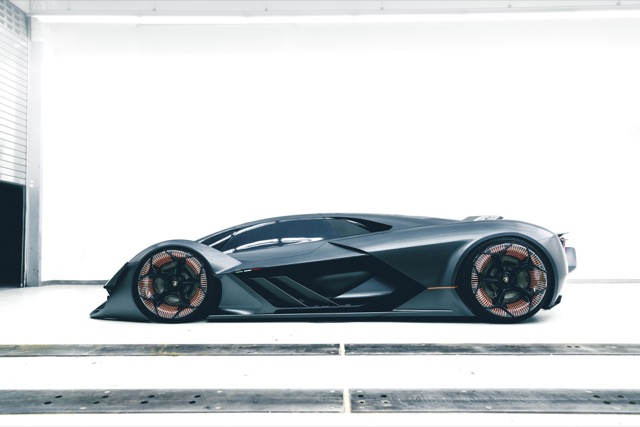
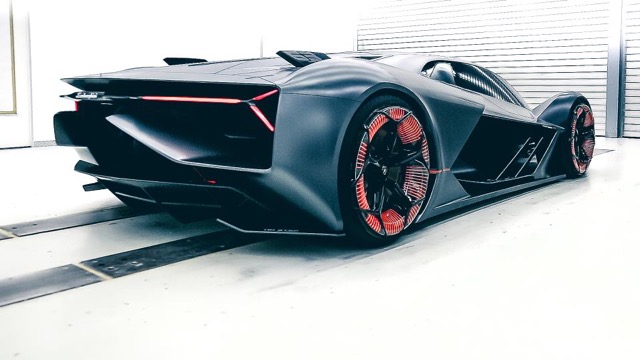
(Lamborghini images)
Automobili Lamborghini, in collaboration with two laboratories of the Massachusetts Institute of Technology, has embarked on the first steps of a possible future Lamborghini electric super sports car. The concept “Lamborghini of the Terzo Millennio” imagines design and technology theories of tomorrow, "while sustaining the visual intrigue, breath-taking performance and, most importantly, the visceral emotion found in every dimension of a Lamborghini," according to the Italian supercar manufacturer. Well, okay then. (11/8)
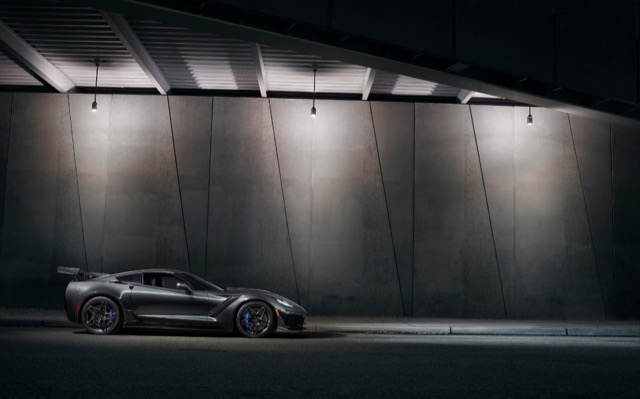
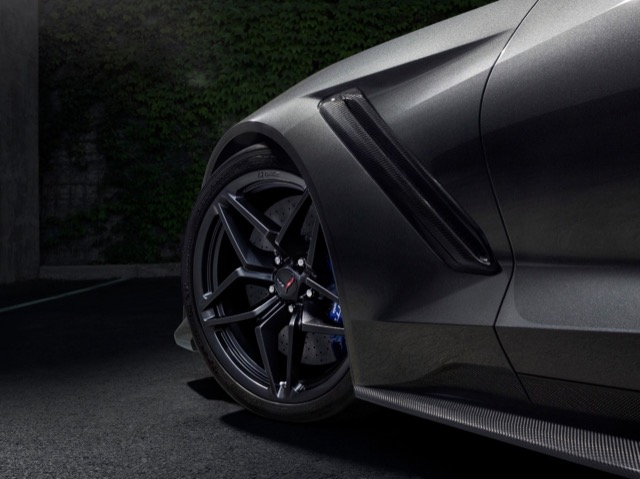
(Chevrolet images)
Editor-in-Chief's Note: The performance credentials of the new Corvette ZR1 are indeed impressive, but its launch timing has screwed up the rollout of the mid-engine C8. The culprit was something having to do with the supercharger system (supplied by Eaton) and cooling, but it really doesn't matter at this point. The Corvette enthusiasts who just have to have the ZR1 will get one, because it's the last hurrah for the front engine C7 Corvette. But everyone else will have to wait for the C8 while Chevrolet operatives figure out what they're doing. But remember, it's not just the production C8 rollout that is being delayed, it also means that the C8.R GTLM racer will be late, too, which at this point is flat-out inexcusable. Oh, and one more thing, it's a good thing that ZR1 sales won't be dependent on the launch photography, because this is the worst photography I have ever seen for a rollout of such a milestone high-performance car. The dark and moody look was overplayed about a decade ago, and it certainly doesn't do the ZR1 justice, at all. –PMD (11/15)
Editor-in-Chief's Note: The hue and cry on Twitter and other outlets over my broadside against St. Elon Musk in my column this week was predictable and expected. That I had the temerity to criticize their Fearless Leader and would deign to bring up the painful reality concerning his antics seemed to be beyond the pale for his devotees. I am not sorry. The blind devotion to this guy is beyond comprehension at this point, and certain denizens of Wall Street and select homers in the media shoulder much of the blame for pumping Musk up to deity status. Yet still, the facts haven't changed. Tesla still isn't able to build a quality automobile. Tesla has never made a profit building automobiles. Tesla is hemorrhaging cash at a prodigious rate. The much-touted Model 3, which was to be the vehicle that would propel Tesla to legitimacy as a mainstream automaker, is a nonstarter and any thoughts of the company building 500,000 of them is the joke that just keeps on giving. And bored with the "hell" of trying to manufacturer the Model 3, Musk turns his maniacally short attention span to showcasing a Class 8 semi-truck and a sports car for the one-tenth of one percenters. He even suggested after the show that the sports car could be turned into a flying car down the road. Am I questioning Musk's brilliance or his visionary perspectives? Absolutely not. I applaud those aspects. But the free pass he has been given as an alleged automaker is inexcusable and unforgivable. In fact, if a domestic automaker had attempted even a shred of what Musk has gotten away with there would be hearings in Washington so public floggings of executives could be carried out. The bottom line? The High-Octane Truth hurts at times. And I stand by every word of my column. –PMD (11/22)

(Aston Martin)
This is the new Aston Martin Vantage. Showcasing obvious design tweaks and powered by a 4.0-liter Twin-Turbo V8 with 503HP and 505 lb-ft of torque coupled to an eight-speed ZF gearbox, the new Vantage goes 0 to 60 mph in 3.8 seconds with a top speed of 195 mph. It is the first Aston Martin to be equipped with a Electronic Rear Differential. The new Vantage will arrive in the U.S. in the second quarter of 2018, with a retail price starting at $149,995. (11/22)
Editor-in-Chief's Note: The whining over this week's column - "Huckster's Paradise" - has been significant. The furious outrage from Motor Trend editors was to be expected and has turned into a firestorm; with one editor demanding that I "walk back" my column because they did not do anything that I inferred in my column, meaning, this isn't the old days and that they conducted themselves above board and with the utmost integrity throughout the evaluation process. I am not going to "walk back" anything, however. At the very least, the Motor Trend editors are guilty of woefully piss-poor judgment in canonizing a car that doesn't deserve any of the accolades it has been given. And if any of these self-righteous M/T editors bothered to check out even a sample of the comments out in the Internet, they'd realize that Motor Trend's credibility when it comes to the COTY is at the very least highly suspect, if not out and out dismissed as a perennial revenue grab. But what's really amazing to me is the hand wringing by enthusiasts who should know better. Let me back up right here, because the notion that there are FCA/Alfa Romeo fans is puzzling to me. Do these people actually think that Sergio Marchionne and his posse actually give a shit about them? Do they think that by buying into the Alfa Romeo "renaissance" they will gain acceptance into an exclusive club that will improve their lives substantially? Here's the thing - the myth of the Alfa Romeo brand exists in history books only. The latest rejuvenation of the brand is an egregiously cynical ploy by a carpet bagging mercenary who is arrogant enough to believe that he can lead people around by the nose and get exactly what he wants from them. The blind devotion to a brand that has been ginned-up to fleece people while they're advised to conveniently ignore major quality issues and nonexistent resale performance for the "privilege" of being associated with it is simply incomprehensible to me. I don't know what the Motor Trend editors were really thinking but they clearly talked themselves into believing in this charade, and that is beyond unfortunate. As for those Alfa Romeo homers out there, people need to get a grip. –PMD (11/29)
Editor-in-Chief's Note: The news that BMW is considering taking its Mini brand all-electric makes sense. Why? Mini is played out as a brand and has lost its mojo. After myriad forays in trying to extend the brand, which failed miserably (remember "The biggest Mini ever"?), Mini simply has nowhere to turn. If Mini is going to survive at all, it will be as a fully electric niche brand. –PMD (11/29)
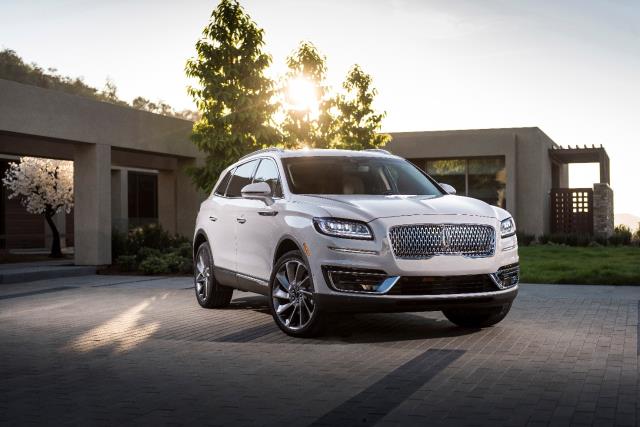
(Lincoln)
Finally. The Lincoln Motor Company is slowly but surely going back to naming their cars. The first signal that this change was coming was the reintroduction of the Continental name to the market. Then the completely revamped Navigator arrived with its name intact. And now they're reintroducing the new 2019 Lincoln Nautilus (formerly called MKX), "a midsize luxury SUV delivering a powerful turbocharged engine range and a suite of advanced technologies designed to give drivers greater confidence on the road," according to Lincoln PR minions. The new Nautilus will arrive at dealers next summer. (11/29)
Editor's Note: Be sure to check out Dr. Bud's column, we're re-running one of his most requested, all-time favorites, "Ridin' A Hot Red Rocket to Hell." –WG (11/29)
Editor-in-Chief's Note: And last but not least, we’re reprising this piece of advertising brilliance from Apple called "Frankie's Holiday." All the best to you and yours from all of us here at Autoextremist.com. –PMD & WG




